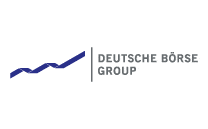Over the past few years, the fixed income market has experienced a remarkable evolution in both product offerings and the utilisation of data-driven insights. As the financial landscape rapidly changes, driven by technological advancements, shifting investor preferences, and regulatory changes, the fixed income market has adapted to these dynamics to better serve market participants.

The integration of ESG factors into the fixed income market has been one of the most notable trends. With climate change becoming a pressing issue globally, there has been a surge in the issuance of ESG-centric bonds, including green, social, and sustainability bonds. These all serve as a means for issuers to raise capital for projects aligned with ESG objectives, while catering to the growing demand from investors who seek to align their investments with sustainability goals.
In addition to this, fixed income issuers have increasingly embraced innovation by structuring bonds tailored to specific investor needs. Structured bonds, with features such as adjustable coupon rates or embedded options, allow investors to better manage risk and exposure to the ever-fluctuating interest rate adjustments we have all experienced in recent times.
Lastly, exchange traded funds (ETFs) in the fixed income space have also continued to proliferate, as they provide exposure to niche fixed income segments such as emerging markets, high yield, and municipal bonds. These ETFs offer investors a convenient way to access a diversified portfolio of bonds while benefiting from intraday trading and transparency.
Aside from the above trends, the value of alternative data sources within the fixed income market are also worth noting. Over the past few years, market participants have started incorporating non-traditional data like satellite imagery, social media sentiment, supply chain data sentiment and online transaction data into their analysis. These alternative datasets offer unique insights into credit risk, issuer performance, and macroeconomic trends, enabling investors to make more informed decisions. Deutsche Börse has thrown its hat into the ring in this regard and developed datasets in partnership with Clearstream who are a leading International central securities depository that has unique visibility into security holdings and transactional data. Clearstream Bond Liquidity provides unique post-trade settlement and transaction data by shining a light on the Eurobond market on a T+1 basis. The data feed can be used to fairly value fixed income assets and portfolios as well as generate unique liquidity scores in addition to measuring liquidity and systemic risk of bond issuers.
On top of alternative data sources, the application of machine learning and AI in the fixed income market has also gained traction. Financial institutions are leveraging these technologies to analyse large volumes of data and extract actionable insights. AI-driven tools have the potential to enhance trading strategies and risk management and it is for this reason that Deutsche Börse has partnered with Overbond to leverage their AI technology. Through the partnership with Deutsche Börse and Clearstream, Overbond’ s customers can gain access to settlement-level fixed-income transaction data derived from the 170 million transactions that Clearstream processes annually across 100 currencies and 60 domestic markets.
Regulatory changes have also played a pivotal role in shaping the fixed income landscape in recent years. Evolving regulations such as Mifid II in Europe and SEC reporting requirements in the US have placed greater emphasis on transparency, reporting, and investor protection. These reforms have driven market participants to adopt advanced technologies for compliance and reporting.
Another important factor influencing the fixed income market has been the intensity of efforts to standardise and consolidate data as it has historically suffered from fragmentation and lack of uniformity. Initiatives, such as the plan to build a consolidated tape in Europe, aims to address these issues by creating a centralised source of bond trade data. The European Union aims to enhance price discovery, enable better analysis of liquidity, and facilitate post-trade reporting. Moreover, the EU is intent on levelling the playing field for all market participants, from institutional investors to retail traders. The tape would aggregate data from various trading venues, providing easier monitoring of market trends, assessing market depth, and evaluating the true cost of trading.
Lastly, a predominant factor shaping the market has been the digital transformation of fixed income processes in recent years. Market participants are embracing electronic trading platforms, primary issuance workflow tools, automation tools, and digital settlement processes. These advancements streamline trade execution, reduce operational risks, and enhance efficiency throughout the trade lifecycle. A recent example of this at Deutsche Börse was when KfW launched the first digital fixed income bond in the form of a central register security on the German Electronic Securities Act (eWpG). The issue was carried out by Clearstream on Deutsche Börse’s D7 digital post-trade platform.
In conclusion, the fixed income market has undergone a significant transformation in product offerings and the utilisation of data-driven insights over the past two years. The integration of ESG considerations, the expansion of innovative bond structures, and the growing importance of alternative data sources reflect the market’s responsiveness to evolving investor preferences. Additionally, advancements in data analytics, AI, and machine learning have empowered investors and market participants with more sophisticated tools for analysis and decision-making. With ongoing regulatory changes and the continuous push for digitalisation, the fixed income market is poised for further evolution in the coming years, catering to the changing demands of investors and the broader financial ecosystem.
For further information on Deutsche Börse’s fixed income analytics offerings, please visit: https://www.mds.deutsche-boerse.com/mds-en/analytics or email analytics@deutsche-boerse.com
